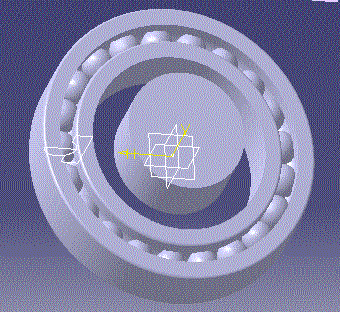![]()
-
Open the KwrBallBearing1.CATPart document.
-
Click the
 Design Table icon in the standard toolbar.
Design Table icon in the standard toolbar. -
Check Create a design table from a pre-existing file. Click OK.
-
Select the KwrBearingDesignTable.xls file and associate automatically the design table columns with the document parameters (i.e. click YES in the "Automatic Associations?" dialog box).
-
In the Design table dialog box, select the configuration 3 (Line 3) and click Apply.
Your ball bearing has changed. It is now a bronze bearing with 21 balls. You can tell the difference when you look at the geometry area. The bearing width is also modified. Click OK to exit the Design Table dialog box. -
Keep your document open and proceed to the next task.
